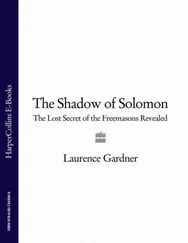456 These included political organizations by Inuit, Yukon Indians, Métis, Cree, and other groups. F. Abele, “Northern Development: Past, Present and Future,” in N. F. Abele et al., eds., Northern Exposure: Peoples, Powers and Prospects in Canada’s North (Montreal: McGill-Queen’s University Press, 2009), 605 pp.
457 Support for the Mackenzie Gas Project is not yet unanimous, as the Dehcho claim isn’t done and they currently don’t support the pipeline. Also, within the NWT the Akaitcho and Northwest Territories Métis claims are not yet settled.
458 “Imperial Says Earliest Startup Date for Mackenzie Gas Project in 2018,” Oilweek, March 15, 2010, www.oilweek.com/news.asp?ID=27306 (accessed April 4, 2010).
459 The amount and details of resource royalty returns vary greatly between settlements. In general, ANCSA lands retain all mineral and subsurface rights on granted land, but receive no royalties from surrounding public land. Canadian land claims agreements retain only a portion of subsurface revenues from their actual owned holdings, but also receive royalties for extraction from surrounding public lands, which are also under land claims management. Thus, the geographic reach of the Canadian settlements extends across public as well as aboriginal-owned land, whereas in Alaska it does not.
460 Parts of this discussion drawn from personal interview with land claims attorney John Donihee, Ottawa, June 3, 2009.
461 At least twenty-two comprehensive land claims agreements have entered effect in Canada. Most recent are the Nunavik Inuit Land Claims Agreement and Tsawwassen First Nation Final Agreement Act beginning 2008 and 2009, respectively. Earlier ones are the James Bay and Northern Québec Agreement (1975), Northeastern Québec Agreement (1978), Inuvialuit Final Agreement (1984), Gwich’in Agreement (1992), Sahtu Dene and Métis Agreement (1994), Nunavut Land Claims Agreement (1995), Nisga’a Final Agreement (2000), Tlicho Agreement (2005), Labrador Inuit Land Claims Agreement (2005), Nunavik Inuit Land Claims Agreement (2008), the Council for Yukon Indians Umbrella Final Agreement (1993), and corresponding self-government agreements: Vuntut Gwich’in First Nation (1995), First Nation of Nacho Nyak Dun (1995), Teslin Tlingit Council (1995), Champagne and Aishihik First Nations (1995), Little Salmon/Carmacks First Nation (1997), Selkirk First Nation (1997), Tr’ondek Hwech’in First Nation (1998), Ta’an Kwach’an Council (2002), Kluane First Nation (2004), Kwanlin Dun First Nation (2005), Carcross/Tagish First Nation (2005). Indian and Northern Affairs Canada, www.ainc-inac.gc.ca/al/ldc/ccl/pubs/gbn/gbn-eng.asp (accessed September 3, 2009).
462 A final wave of LCAs will be in British Columbia, the only British colony in North America that refused to extinguish aboriginal title through treaties. BC tribes are now actively negotiating modern land claims treaties. T. Penikett, Reconciliation: First Nations Treaty Making in British Columbia (Vancouver: Douglas & McIntyre Ltd., 2006), 303 pp.; personal interview with former Yukon premier T. Penikett, Ottawa, June 2, 2009. Also, Indian and Northern Affairs Canada is still negotiating claims agreements with the Dehcho, Akaitcho, and Northwest Territories Métis Nation in NWT, plus two Denesuline overlaps in the southernmost NWT and southern Nunavut. Claims are also being negotiated, or are entering negotiations, in Québec, Labrador, the Maritime Provinces, and Eastern Ontario; personal communication with D. Perrin, Indian and Northern Affairs Canada, November 24, 2009.
463 Greenland’s highest elected body prior to the introduction of Home Rule in 1979 was the Landsråd , roughly translated as “Provincial Council.” J. Brøsted and H. V. Gulløv, “Recent Trends and Issues in the Political Development of Greenland,” Actes du XLII Congrés International des Américanistes, Paris (September 1976): 76-84.
464 Home Rule was introduced on May 1, 1979. In 1982 Greenland voters passed another referendum to withdraw from the European Community. Certain areas, such as foreign affairs and justice, are still managed by Danish authorities, but the Danish government must consult Greenland on all matters relevant to it. The chief connection between the two countries today is economic, as Greenland depends on heavy subsidies from Denmark for solvency. In 2008 Greenland voters overwhelmingly passed another referendum moving Greenland toward full independence from Denmark.
465 As noted in the preceding note, full independence for Greenland, which some speculate could be declared in 2021, the 300th anniversary of Danish colonial rule, will require weaning from generous Danish subsidies averaging $11,000 annually for every Greenlander. The most likely mechanism for this weaning is revenue from oil and gas development, which is being actively encouraged by the Greenland government. So far, thirteen exploration licenses have been issued to companies like ExxonMobil, and another round of licensing will take place in 2010. “Greenland, the New Bonanza,” in The World in 2010 , special supplement to The Economist (2009): 54.
466 Canada’s Constitution Act of 1982.
467 The Dene of the Northwest Territories and the southern Yukon were signatories of Treaty 8 or Treaty 11, but these treaties were never fully implemented. Personal communication, D. Perrin, Indian and Northern Affairs Canada, November 24, 2009.
468 To make this map, multiple data sources from the Alaska Bureau of Land Management, the Alaska Department of Natural Resources, the U.S. National Atlas, Natural Resources Canada, and Indian and Northern Affairs Canada were combined in a Geographic Information System (GIS) as follows: (1) Alaska land claim data were extracted from the Alaska Bureau of Land Management’s Spatial Data Management System. Land claims are represented by Native Patent or Interim Conveyance zones and Native Selected zones, data accessed from http://sdms.ak.blm.gov/isdms/imf.jsp?site=sdms (2) Alaska Native Claims Settlement Act (ANCSA) Corporation boundaries were downloaded from the Alaska Department of Natural Resources Geospatial Data Extractor. Boundaries were created from the Bureau of Land Management’s “Alaska Land Status Map” dated June 1987, data accessed from http://www.asgdc.state.ak.us/. (3) Indian lands of the United States were downloaded from the National Atlas and show areas recognized by the Federal Government as territory in which American Indian tribes have primary governmental authority, administered by the Bureau of Indian Affairs, data accessed from http://nationalatlas.gov/mld/indlanp.html. (4) Indian lands in Canada were downloaded from Natural Resources Canada’s GeoBase. These include surrendered lands or a reserve, as defined in the Indian Act, and Sechelt lands, as defined in the Sechelt Indian Band Self-Government Act, data accessed from http://www.geobase.ca/geobase/en/data/admin/alta/description.html (5) Canada land claims were extracted from the ‘Comprehensive Land Claims Map’ from Indian and Northern Affairs Canada, updated through late 2009 at http://www.ainc-inac.gc.ca/al/ldc/ccl/pubs/gbn/gbn-eng.asp.
469 After the bloody Pontiac Uprising in which nine British forts were captured, King George III issued the Royal Proclamation of 1763, which declared that Indians should “not be molested or disturbed” and only the Crown, not private citizens, was allowed to purchase land from them. To this day it is credited as a first legal acknowledgment of aboriginal land claims in Canada. Also, British Columbia refused to extinguish aboriginal title, as per note 462.
470 A second type of modern agreement, called “Specific Claims,” exists in Canada to redress past grievances of aboriginal groups who did sign historic treaties. Many aboriginal groups have pursued, or are pursuing, Specific Claims. However these are typically cash settlements and do not relate to land title.
Читать дальше












